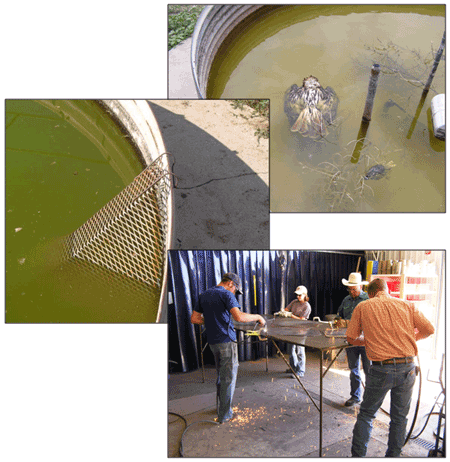Water Tank Ladders
|
Bird drowning in livestock watering tanks likely has been a problem since the use
of artificial watering sources became popular across the grasslands of North America.
Since 2001, we have found carcasses of hundreds of birds in livestock watering tanks
across western Nebraska, including Western Meadowlarks, Horned Larks, Mountain Bluebirds,
Ferruginous Hawks, Red Crossbills, and Lark Buntings. During a time of declining
population trends for even the most common prairie birds, we must take measures
to reduce the severity of negative impacts that may be afflicting our native fauna.
Wildlife escape ladders are one measure to reduce bird drowning in stock tanks.
Rocky Mountain Bird Observatory (RMBO) developed the
design of a ladder that may
be used to meet the standard requirements for NRCS Standard 614, Watering Facility,
which requires installation of a wildlife escape ladder in these facilities. The
design was revised by NRCS to provide dimensions for ease of fabrication.
During the summer of 2006, Nebraska Prairie Partners, conducted a large, region-wide
study of bird drowning in livestock watering tanks and the effectiveness of wildlife
escape ladders compared to a flotation device (a board) that landowners usually
put in tanks, while other tanks had no escape device. Landowners then recorded the
number of times they visited each respective tank, along with the number and species
of all drowned birds. Analyses of the results show that the presence of a wildlife
escape ladder decreases the likelihood of drowning, and that lower water level increases
the likelihood of drowning. Water levels greater than one inch below the tank edge
are most likely to cause birds to drown, presumably because the birds have to lean
forward a greater distance to drink or because there is too great of a distance
for them to escape once they have fallen in. In addition, we found that other flotation
devices (wooden fence posts, etc.) increase the likelihood of bird drowning, which
is in direct contrast to what landowners had originally believed. Click
here to
see the full report.
|
 |
|
|
|
|
|
|